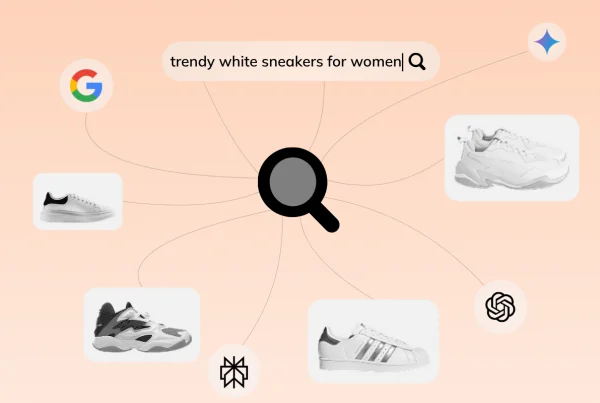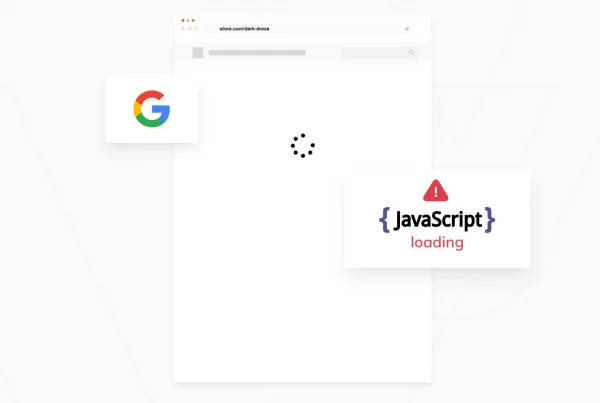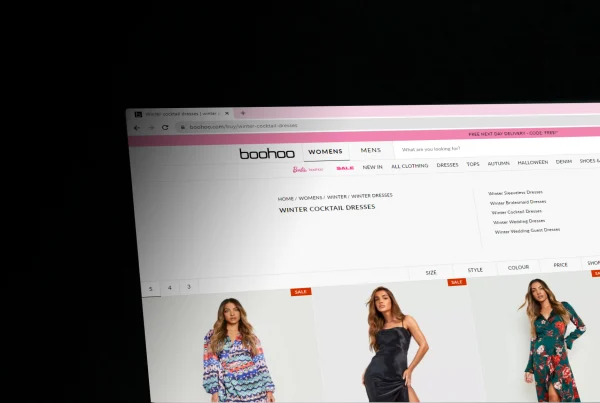Blog article
Rich snippets explained: everything you need to know
Estimated reading time: 10 minutes

In this comprehensive guide to rich snippets, we’ll cover everything from A to Z.
You’ll find out what they are, how they affect your site, how you can benefit from them and how to properly configure and test them.
And the best part?
We’ll point out the most common mistakes people make when dealing with rich snippets.
Let’s get started!
What are rich snippets?
Rich snippets are normal Google search engine results that have been “enriched” with additional information that is prominently visible, such as rating stars, links, images and prices. This information is taken from the structured data written inside the HTML. They commonly appear with pages containing recipes, reviews, products, Q&As, people and music.
For a search engine visitor, the goal of rich snippets is to help the user quickly determine if the page is worth visiting or not. This is because rich snippets catch the user’s attention and increase the click-through-rate. This shows the huge benefit for webmasters—if you are using the rich snippets correctly, they may attract more visits to your site compared to competitors.
To gain a better practical understanding, let’s compare them with normal snippets.
Rich snippets vs normal snippets
What information do you usually get from Google’s search results? The answer is:
- Page title
- Meta description (a short text description of a page’s content)
- URL
If rich snippets didn’t exist, that would be all the information you would see.

Snippets, or normal snippets, are the combination of these three things.
Once you as a webmaster decide to carefully fill the structured data, your pages might show more than just these three things.
For example, if you have just published a recipe, a search result might show additional information such as preparation time, calories and perhaps an image of the recipe. Not only is this more attention-grabbing, but it will result in a higher organic CTR (click-through rate).

If your page contains a product review, a rich snippet may show the writer’s name and a rating.
Are “rich snippets” and “rich results” the same thing?
Although these two terms are connected, they are not the same thing. Yet, it’s normal to find this confusing. Unless you are an expert, it’s hard to tell the difference between these terms.
Even professionals mix up these terms, since all these concepts are fairly new and under constant development and modification.
“Rich results” is a broader term and represents any type of “enriched” search result snippet. Rich snippets can be categorized as rich results.
There is also a similar category called SERP features. Everything else you might see on Google’s result page is a SERP feature, including featured results, ads, knowledge panels (Wikipedia pages on the right of your screen) and more.
Why are rich snippets important for your site?
Put yourself in the site visitor’s shoes. You intend to buy a new office printer. You type a model name into a search box and these are the results you get:
- The manufacturer’s site
- A page showing a rating and the number of reviews
- A page showing a rating, the number of reviews, the price and the words “in stock”
Which result do you visit? The third of course.
This is the whole point of rich snippets—to provide additional information that results in more site visits. Rich snippets stand out, and not only do they look more attractive, but they also go further in offering a potential solution to a given “problem”.
Rich snippets are beneficial for all—search engines, readers and webmasters.
So how come?
Search engines better understand page content with rich snippets.
Readers are looking to find the best solution for their inquiry.
Webmasters are happy to outperform competitors with additional traffic and a higher CTR.
A win-win-win situation.
Do rich snippets help SEO?
“Do rich snippets help a site rank higher on search engines?” is a commonly asked question. The answer? Yes and no. While they don’t directly affect SEO, they help the process, for sure.
Let’s break this down.
No. Rich snippets aren’t directly connected to SERP ranking. They are not a factor in whether or not you are #131, #53 or #2 on Google.
However, you’ll find hardly any rich snippets after the first page of results. This is because they are worthless if nobody is viewing them. What’s more, if your page ranks poorly, there is a high chance that Google won’t even approve your rich snippets.
Yes. Rich snippets can indirectly help you rank better in the long term. We spoke about how rich snippets can increase CTR. A higher CTR results in more people visiting your site, and more site visits help Google to recognize your site as being preferable to competitors. When this happens, your ranking is sure to increase.
What are the most common rich snippets?
Not every page type can have rich snippets, so it’s extremely important to select a structured markup designed for your page type. Here is a list of the most commonly used :
- Products
Products are one of the most popular pieces of content for rich snippets. It is easy to provide essential information with just a couple of words and numbers. Rich snippets for pages in the product category will usually display the price tag, rating and whether or not it’s in stock.

- Recipes
Pages containing recipes are what made rich snippets popular. Recipe pages give basic facts in a similar way to culinary magazines. As you can see below, there is a rating, the number of reviews, the time needed to prepare the recipe and the number of calories.
For some people, the number of calories isn’t as important as the time needed to prepare the cake. On the other hand, some people will only visit a page if the recipe has a low calorie count. With either case, the reader will find what they are looking for.

- Reviews
There are two main types of reviews: those of the author and those of the users. You’ll be able to distinguish them easily, since reviews by the author are labeled “review by…”

Ratings voted by users will display the number of voters, for example, “Rating: 4.2 – 55 reviews”.

- Events
Structured data markup only works for events that will take place in the future. In this instance, the name of the event, the time, duration, ticket details and location can be shown.

- People
When you are searching for a well-known person, Google may give you their name, title, role and public contact details.

How to implement rich snippets
To implement rich snippets, you will need to define structured data and add it to your website. Depending on your experience and preferences, there are a couple of methods available.
Manual method (best for developers)
The most popular option is to follow the guidelines from Schema.org. Although this is the most reliable method, you may find it challenging if you are not a developer.
Schema is a project developed by Google, Microsoft and Yahoo, to help create uniform structured data markup. It enables you to find pieces of code for any rich snippet type you need. Choose the one that fits your content, find examples and customize them to suit your requirements.
There are three markup options (or ways to write code) on Schema: Microdata, RDFa and JSON-LD.
We recommend JSON-LD as the most common option and the one already used by many tools and SEO-related plugins.
If you need any further help or explanation, check out Google’s documentation on structured data.
Plugin getaway (an easier solution)
If you don’t feel like learning web development right now, there are plenty of other options available.
Search in your WordPress plugin section for “structured data” and you’ll find many options to choose from. Yoast and Rank Math are among the top choices. Yoast is better for offering basic options and Rank Math offers more advanced features.
How to test rich snippets
Once you have finished implementing rich snippets, it’s time to check if they work.
If you have been using the manual method, then checking functionality is a must. However, it’s good to double-check even if you have used markup generators and plugins to help you.
The process is fairly straightforward. All you need to do is deploy code (or URL) through Google’s Rich Results Testing Tool and check the results.
Why aren’t your rich snippets visible?
Manually adding structured data to your site isn’t the easiest thing on the planet. There’s a chance you will encounter an unknown problem which renders all of your work pointless.
To help you avoid them, here is the list of the most common issues:
#1 – It isn’t guaranteed that Google will show your snippets
Everyone who deals with Google’s algorithms knows how tricky this search engine can get. If your structured data isn’t implemented 100% correctly, your rich snippets won’t be displayed. However, even if it is correct, visibility is not guaranteed.
#2 – Markup languages are mixed up
We mentioned above that you can use either RDFa, Microdata or JSON-LD, and whilst this is true, if you mix them up, your rich snippets probably won’t work.
#3 – Your page is in the testing phase
Google may show/remove your snippets in the first week because it is still a testing phase. The results only become long term after 2 months or more.
#4 – Coding problems
Do we even need to mention this one? Make sure your data is marked up correctly, without any bugs within the code. Double-check if all your tags are properly opened and closed.
#5 – Data is misleading or irrelevant
Make sure the data in your rich snippet offers real value to potential visitors. It needs to be informative, honest and it should truly represent the page’s content.
#6 – Your site is unreliable
If your site is unreliable in the eyes of a search engine, or the data contains profanity or vulgar language, you can forget about rich snippets.
Conclusion
Rich snippets are a powerful tool that adds value, attracts new visitors and increases your page ranking. They wouldn’t be the first thing you optimize, yet, when we’re talking about fine-tuning, rich snippets can truly make all the difference.
Once you are finished with essential performance and SEO optimization, it’s time to invest some time and effort into the configuration of structured data to achieve a higher CTR and more visits. This will result in better overall SERP rankings.
The game of optimization is all about constant adaptation. If you don’t keep up with new trends and algorithms, you could quickly become buried in the invisible part of the web.
About The Author
How can Verbolia help your e-commerce platform.


